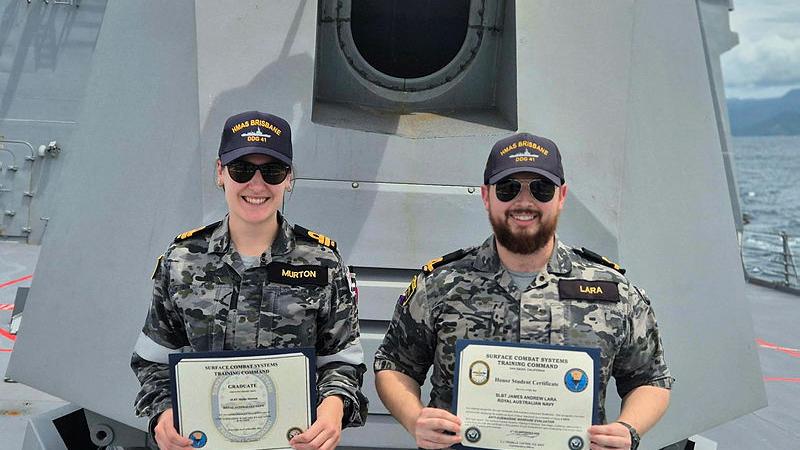Balancing support to warship visits and managing more than 1000 permanent and reservists is all in a day’s work for HMAS Moreton.
Located on the Brisbane River’s south bank, the station’s role involves handling fuel, supplies, maintenance, berthing, and crew support for Navy operations from the Tropic of Capricorn to the NSW border.
Moreton’s Commanding Officer, Commander Rosemarie Apikotoa, said if a ship seeks shelter from a storm they will always assist.
“Turn it on short notice, get them in, fuelled up, get the team some respite and then back out to sea when the weather abates,” she said.
Moreton also plays a role during high-risk weather seasons.
“In the floods we had people on the ground conducting headquarters functions and supporting all the Navy communications and engagement pieces,” Commander Apikotoa said.
Although the base now operates in peacetime, following the release of the recent Defence Strategic Review, Commander Apikotoa still maintains a level of readiness with the view to support increased operations in future.
“The strategic environment has changed, so I’ve been heavily involved in planning what that means for Brisbane, and how to transition a peacetime headquarters to support the growing fleet along the east coast,” she said.
“Right now, we don’t have any home-based ships at HMAS Moreton, but we do have ADV Reliant home-ported here in Brisbane. We also look forward to working with Army and their watercraft capability.”
They also host Australia’s only Regional Reserve Centre, handling all admin, training, deployment and support for Navy reservists in south-east Queensland.
“The strategic environment has changed, so I’ve been heavily involved in planning what that means for Brisbane, and how to transition a peacetime headquarters to support the growing fleet along the east coast.”
Commander Apikotoa said they do their best to provide complete personnel management.
“Handling their administration, postings, contracts and ensuring their readiness,” she said.
“We have two people that do that on an almost full-time basis. Right now I live and breathe off [reserve] members – they are our best.”
Moreton operates with a small team of permanent staff and predominantly reserve workforce.
One of those is reservist Able Seaman Joseph Ahearn, who assists the visit liaison team by managing accommodation and provision of gangways and fenders when ships dock, as well as ceremonial and representational duties.
“A gangway is like a large ladder that people walk on to go from the wharf to the ship,” he said.
“Fenders are like large rubber tyres/devices that sit between the wharf and the ships to stop them from smashing into the wharf.”
As part of the ceremonial team, Able Seaman Ahearn also helps with commemorations and veteran funerals across south-east Queensland.
In 2019, the latest upgrade of Moreton’s 52-person transit accommodation, a multi-user conference room and new office spaces was completed.
The accommodation building is primarily used by Navy and Army cadet units, and personnel attending nearby courses.
Although they lack a mess or sick bay, the building is prioritised for operational needs.
The base has shifted locations, size and capabilities over time, moving from Alice and Edward streets in Brisbane city to New Farm and now Bulimba.
It has served as Brisbane’s eyes and ears since 1942 and, during World War 2, it supported about 70 submarines along the Brisbane River.
The motto ‘Hold Fast’ has been upheld since then, reflecting the base’s enduring resilience.
“In 1942 Darwin had been hit, Sydney had been hit, Brisbane was holding the line,” Commander Apikotoa said.
“‘Hold Fast’ is a mariner term for: hold on to your rigging, there’s a storm coming.
“We keep that motto as our leadership philosophy today and we remember that in peace time.”







